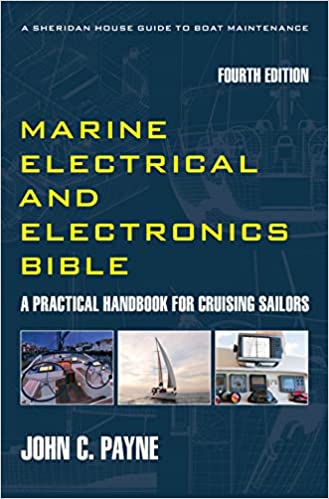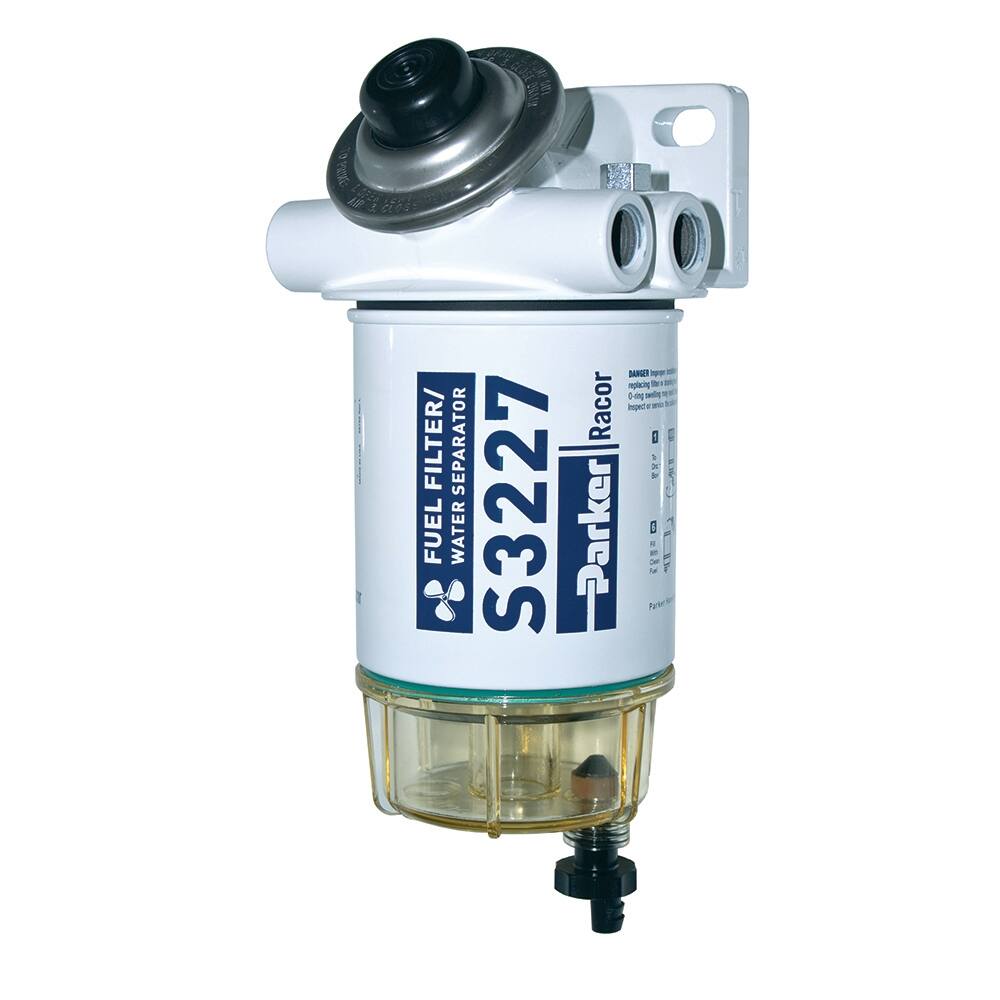Boat Generator Installation Location
Boat Generator Installation, so where are you going to install the generator? Major factors are actual space or area size. Then when you come up with that solution add in the really important issue of accessibility. How can you access to do simple servicing such as an oil change or oil top up. Then as most people opt for a sound shield is the proposed area conducive to removal of the sound shield and allowing access. This is not just for servicing but also for installation. The next point is how easy is it to route the various utilities such as cooling water, fuel supply, air intake as well as installing the exhaust. It doesn’t take long to get a very congested space.
The Marine Electrical Electronics Bible is now out, buy and save money, make your boat more reliable and be self sufficient.Boat Generator Installation - Fuel Systems
Like your main propulsion engine, clean fuel is essential to proper operation of the genset. Some gensets require the installation of an additional fuel pump back to the diesel tank. Clean fuel is essential and you can’t overdo this. The installation of a good filter and water separator system such as a Racor Fuel Filter is essential, I have done so on all my boats, both for propulsion and genset. The entrapment of water is the key to diesel injector and fuel pump reliability. But don’t forget the maintenance as these filters need a weekly check and to drain off any accumulated water. If you are getting a lot of water then you need to check out the fuel tank. The same rules apply for generators as they do for all diesels, old fuel causes problems, if a genset has been shutdown for several months and has old fuel in the system then you can get starting issues. It is worth considering a fuel additive to use before laying up. Moisture in diesel fuel can create biological fouling issues.
Check out the Racor range of diesel fuel filters through the link. Having used Racor filters for many years on commercial ships, oil rigs and installed them on my own boats, I highly recommend installing the best fuel filtration you can. Image Courtesy Parker
Boat Generator Installation - Exhaust Systems
Not unlike propulsion engines, improperly installed exhaust systems are a major cause of problems and failure. All of the generator manufacturers have very detailed and well written manuals. Absolutely read the manual with respect to the exhaust installation and make sure that your installer is following the requirements. In fact read the manual several times.
The exhaust outlet should be installed above the loaded waterline. Ensure that the vented loop (siphon break) is installed exactly where required and regularly check that it operates. Same applies for silencers, water locks, exhaust mixer elbows and so on. Download and checkout some of the manuals and you will see what I mean. Ensure that exhaust lines are properly installed with respect to loops, and slope angles, and that there are no points where water can be trapped.
Boat Generator Installation - Exhaust Systems
As with all engines use absolutely must use caution when cranking over the generator as water can fill the muffler and back up into the generator engine. When bleeding the fuel system, Northern Lights recommends closing the seacocks, and removing the water pump impeller during the process. Read that and follow the recommendations. Worth the investment is a Gen-Sep water separator which separates nearly all the water from the exhaust gas and drains it out via a through-hull fitting below the waterline. This eliminates that noise and pulsating splashing water characteristic of generator exhausts.
Boat Generator - Exhaust Systems Checks
Regularly inspect the exhaust outlet and ensure there are no obstructions. Perform a visual inspection of exhaust system joints for exhaust leaks, which will often exhibit carbon residues and soot around the leakage points. The system must be leakproof. You absolutely must rectify these leaks as gases (Carbon Monoxide) are potentially fatal. If you haven’t got a carbon monoxide detector installed then make sure you do so. A leak can end up silently killing everyone on board if gases leak down into the boat. Carbon monoxide is capable of causing severe nausea, fainting and death. Extra caution should be exercised when anchored or moored up in a quiet and calm location as there may be no breeze to disperse any accumulated gases.
Boat Generator Installation - Seawater Systems
Ideally a separate seawater system supply seacock and strainer should be used. Ensure that the strainer is cleaned regularly, which is often forgotten until a high temperature occurs. Where the generator has anticorrosion zinc anodes, make sure you check these regularly. The seawater inlet should not be fitted with a scoop type inlet. It can pressurize the water and subsequently force water past the pump impeller, which can cause the muffler to fill. In the worst case this can flow into the exhaust manifold and engine cylinders. Where necessary regularly check belt tensions so that pump is working properly. Make sure you carry a couple of seawater ump impellers, they should be changed at the recommended intervals and inspected regularly.
Boat Generator Installation - Starting Systems
The generator requires a battery to start the diesel motor, so the question is a dedicated battery or powering off the main engine start battery. I know some who prefer using the same engine start battery and let the genset alternator recharge it every time it operates. Obviously selection of a sealed maintenance free battery is a priority, perhaps an AGM type.
Boat Generator Control Systems
Generators are generally remote start and stop with automatic engine protection systems. In most generators, all shutdown functions are suppressed for 10–20 seconds at start-up, and this may include low water pressure and low oil pressure. In any system it is important to know what interlocks are in the start ready chain. Most generators will trip automatically on over-speed, high crankcase pressure, high temperature, low oil pressure, and low oil levels. Check the spec sheet for your engine, these days the engine control systems are quite sophisticated and monitor most everything. More on boat generators and also more about boat generator installation.

